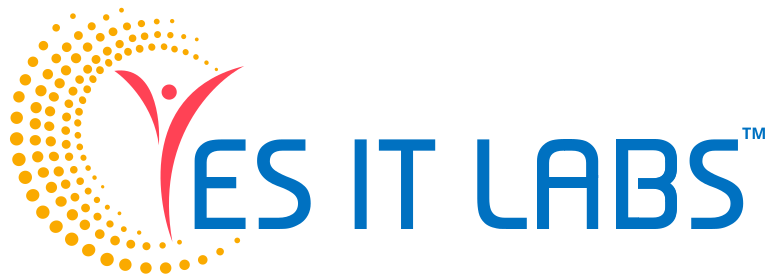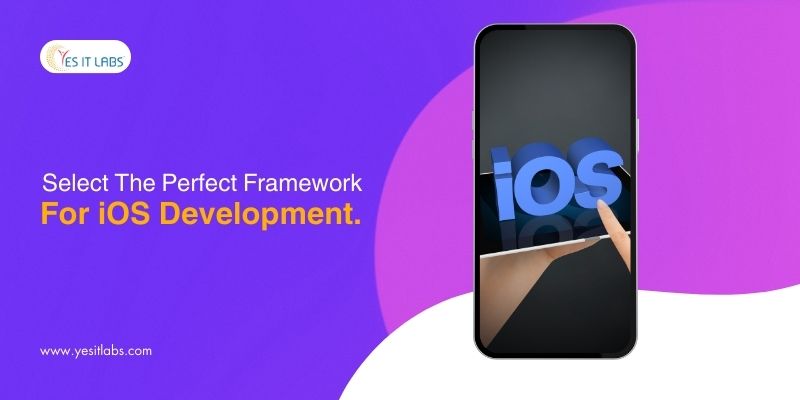Apple provides two primary options for building user interfaces: UIKit and SwiftUI. While UIKit has been the standard for many years, SwiftUI represents a modern approach that promises enhanced efficiency and a more streamlined development process. This comprehensive guide will delve deeper into both frameworks, exploring their strengths, and weaknesses, and how to make the best choice for your next iOS app development project.
A framework is a crucial component of iOS app development. Apple has offered two primary frameworks for building user interfaces: UIKit and SwiftUI. UIKit has long been the go-to framework for developers, but SwiftUI, introduced in 2019, brings a modern approach to app development. This blog will compare both frameworks, discuss their advantages and limitations, and help you make an informed decision.
What is UIKit?
UIKit has been the backbone of iOS app development since its inception. It provides a robust and flexible set of tools for building user interfaces. Here’s a deeper look into UIKit:
- Established Framework: UIKit has been around since iOS 2, providing a stable and well-documented environment for iOS native app development.
- Imperative Programming: UIKit follows an imperative programming model where developers explicitly define the steps to create and manage UI elements.
- Extensive Ecosystem: With years of development, UIKit benefits from a vast array of libraries, tools, and community resources.
Pros of UIKit:
- Mature and Stable: With over a decade of use, UIKit is a reliable choice with a well-established track record.
- Compatibility: Supports older versions of iOS, making it ideal for apps that need to reach a broader audience.
- Granular Control: Offers detailed customization options for UI elements and interactions.
Cons of UIKit:
- Complexity: The imperative style can lead to complex codebases, especially in large projects.
- Steeper Learning Curve: New developers may find UIKit’s approach more challenging to master.
What is SwiftUI?
SwiftUI, introduced in 2019, is a modern framework designed to simplify UI development with a declarative programming approach. Here’s what makes SwiftUI stand out:
- Declarative Syntax: SwiftUI allows developers to describe what the UI should look like, rather than how to build it, making code more readable and maintainable.
- Live Preview: SwiftUI’s live preview feature displays real-time changes as you code, streamlining the development process.
- Integration with Swift: Built to work seamlessly with Swift, SwiftUI promotes a clean and modern coding experience.
Pros of SwiftUI:
- Simplified Development: The declarative syntax reduces boilerplate code and simplifies UI creation.
- Live Preview: This enables developers to see changes instantly, speeding up development and design iterations.
- Future-Ready: Designed with modern practices, SwiftUI is expected to continue evolving and receiving support from Apple.
Cons of SwiftUI:
- New and Less Mature: SwiftUI has fewer resources and third-party libraries than UIKit because it is a newer framework.
- Limited Compatibility: Only available on iOS 13 and later, which might limit its use for apps targeting older iOS versions.
Comparing SwiftUI and UIKit
Understanding the strengths and weaknesses of SwiftUI and UIKit will help you choose the right framework for your project. Here’s an in-depth comparison:
1. Development Speed and Efficiency
- SwiftUI: The declarative syntax and live preview feature in SwiftUI allow for faster development and iteration. Developers can make changes and immediately see results, reducing the time spent on trial and error. For those working with an iOS app development company or iOS native app development experts, SwiftUI can enhance productivity and streamline the development process.
- UIKit: While UIKit’s imperative approach requires more code and manual updates, its mature ecosystem and comprehensive documentation can mitigate some of the speed disadvantages. However, if you need to hire an iOS developer or collaborate with a mobile app development company, UIKit’s extensive resources can be a valuable asset.
2. Complexity and Learning Curve
- SwiftUI: Offers a more intuitive and streamlined approach, making it easier for new developers to learn and apply. The declarative style simplifies the process of creating and managing UI components. For custom iOS app creation, SwiftUI can simplify the development process, especially when working with an iOS app development company.
- UIKit: The imperative approach can be complex and requires a deeper understanding of how UI components interact, which may be challenging for newcomers. However, for seasoned iOS native app development experts, UIKit’s detailed control can offer greater flexibility in Apple app development projects.
3. Performance and Optimization
- SwiftUI: While SwiftUI is designed to be efficient, its performance can vary based on the complexity of the app and the version of iOS being used. Newer updates and bug fixes are continually improving its performance. For mobile app development company projects, keeping up with SwiftUI’s updates can ensure optimal performance.
- UIKit: Known for its stability and performance, UIKit has been extensively tested and optimized over the years, making it a reliable choice for high-performance applications. This reliability is beneficial when working on Apple app development or custom iOS app creation projects.
4. Compatibility and Legacy Support
- SwiftUI: Limited to iOS 13 and later, which can be a drawback for apps needing to support older devices or operating systems. This limitation may impact the decision if broad compatibility is a priority for your iOS app development.
- UIKit: Compatible with a wide range of iOS versions, making it suitable for projects requiring support for older devices and operating systems. For legacy iOS native app development projects, UIKit remains a strong choice.
5. Integration and Ecosystem
- SwiftUI: Integrates seamlessly with Swift and other modern technologies, encouraging the use of up-to-date coding practices. However, its ecosystem is still growing, and third-party library support is limited compared to UIKit. When considering custom iOS app creation, the growing ecosystem of SwiftUI offers promising future possibilities.
- UIKit: Benefits from a well-established ecosystem with numerous third-party libraries, plugins, and tools. This extensive support can be advantageous for projects that rely on existing libraries or custom solutions. Collaborating with an iOS app development company that specializes in UIKit can leverage this extensive ecosystem.
6. Community and Support
- SwiftUI: As a newer framework, SwiftUI has a smaller but growing community. Apple’s official documentation and online resources are expanding, but the community-driven support is not as extensive as UIKit. Engaging with iOS native app development experts who are adept with SwiftUI can provide valuable insights and support.
- UIKit: With its long history, UIKit has a large and active community. This extensive support network includes numerous tutorials, forums, and third-party resources that can assist in development. For apple app development projects, UIKit’s broad community support can be a significant advantage.
7. Future-Proofing
- SwiftUI: Positioned as the future of iOS development, SwiftUI is likely to receive continued updates and improvements. Adopting SwiftUI may offer long-term benefits as it evolves and becomes more integrated with Apple’s ecosystem. Working with an iOS app development company that stays updated with SwiftUI advancements can ensure your projects remain at the cutting edge.
- UIKit: While still relevant, UIKit may see less focus in future updates as Apple prioritizes SwiftUI. However, UIKit’s maturity and stability make it a reliable choice for the present. For ongoing custom iOS app creation projects, UIKit’s established status provides a dependable option.
Case Studies and Real-world Applications
To further illustrate the differences between SwiftUI and UIKit, let’s explore a few real-world scenarios:
1. Startup Apps
For startups aiming to quickly launch a minimum viable product (MVP), SwiftUI offers a faster development cycle and more efficient prototyping. The live preview feature and declarative syntax make it easier to iterate and refine the app’s design. If you’re a startup looking to hire iOS developer talent or collaborate with an iOS app development company, SwiftUI can accelerate your development process.
2. Enterprise Applications
Large enterprises with complex requirements might benefit from UIKit’s extensive control and compatibility. UIKit’s mature ecosystem allows for detailed customization and integration with existing systems, which can be crucial for enterprise-level applications. Engaging with iOS native app development experts can help leverage UIKit’s strengths for your Apple app development needs.
3. Legacy Projects
For projects maintaining support for older iOS versions or needing extensive customization, UIKit is the preferred choice. Its compatibility with older versions and rich feature set make it suitable for maintaining and updating legacy apps. If you’re involved in custom iOS app creation or working with a mobile app development company, UIKit’s capabilities are invaluable.
Best Practices for Transitioning
If you’re considering transitioning from UIKit to SwiftUI or integrating both frameworks, here are some best practices:
- Evaluate Your Requirements: Assess your project’s needs, including compatibility requirements, performance expectations, and development speed. This will help determine the best framework or combination of frameworks. For instance, a mobile app development company can guide you in choosing the right approach based on your specific project goals.
- Start Small: If transitioning to SwiftUI, start with smaller components or new features to gradually familiarize yourself with the framework. This approach can ease the learning curve for developers new to SwiftUI.
- Leverage Interoperability: SwiftUI and UIKit can coexist within the same project. Use SwiftUI for new components and UIKit for existing or complex elements to leverage the strengths of both frameworks. For iOS native app development experts, this hybrid approach can be particularly effective.
- Stay Updated: Keep up with the latest updates and enhancements in both frameworks. Apple continuously improves SwiftUI and UIKit, and staying informed will help you make the most of new features and best practices. Engaging with an iOS app development company that stays current with updates can benefit your projects.
Conclusion
Choosing between SwiftUI and UIKit involves evaluating various factors, including project requirements, development speed, complexity, and prospects. SwiftUI offers a modern, efficient approach with its declarative syntax and live preview feature, making it ideal for new projects and rapid development. UIKit, with its mature ecosystem and detailed control, remains a strong choice for complex, legacy, or highly customized applications.
Ultimately, the best framework for your project may involve a combination of SwiftUI and UIKit. By understanding the strengths and limitations of each, you can make an informed decision that aligns with your project goals and development practices. Whether you’re embarking on a new app development journey or maintaining an existing project, SwiftUI, and UIKit provide powerful tools for creating exceptional iOS experiences. Choose wisely.









